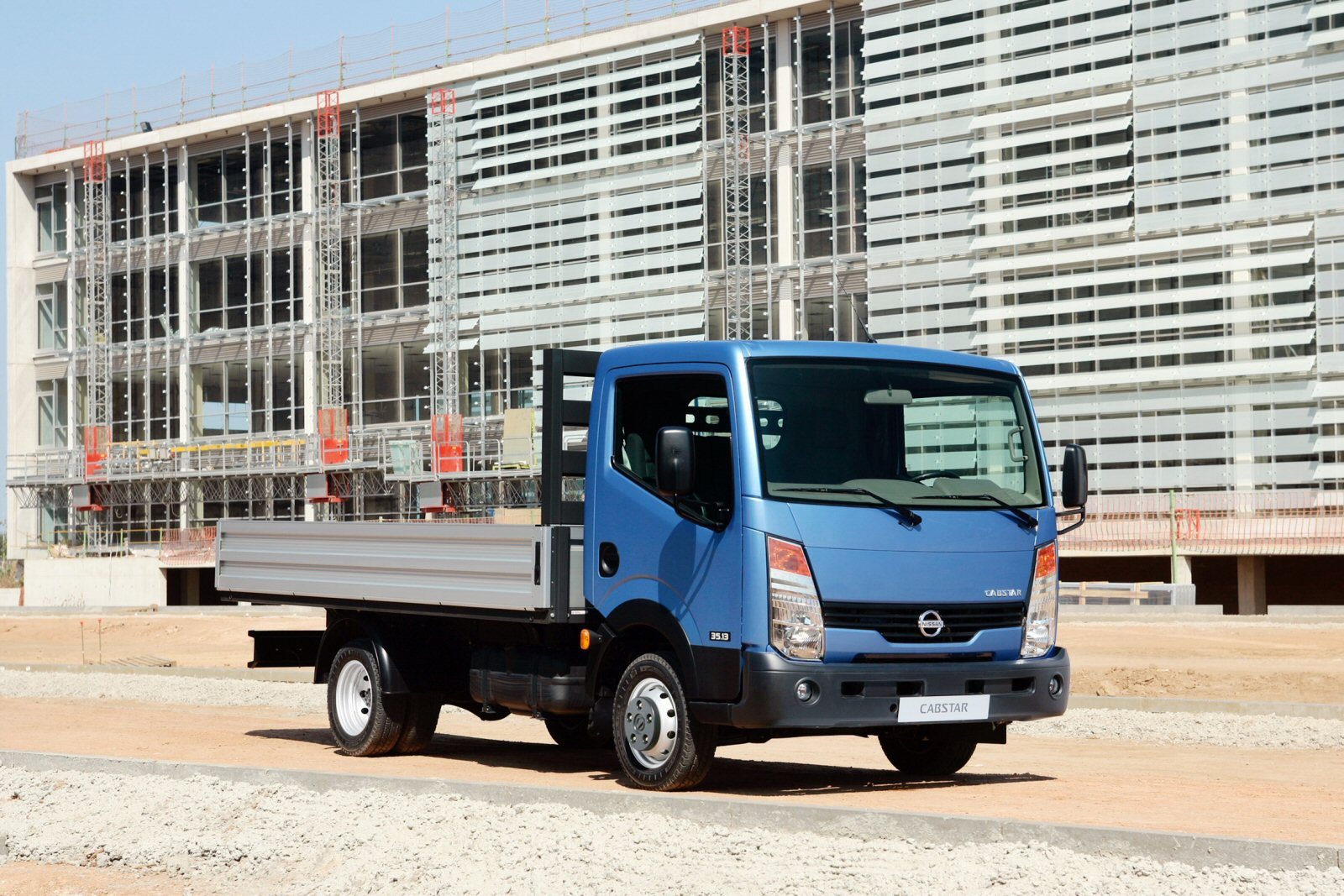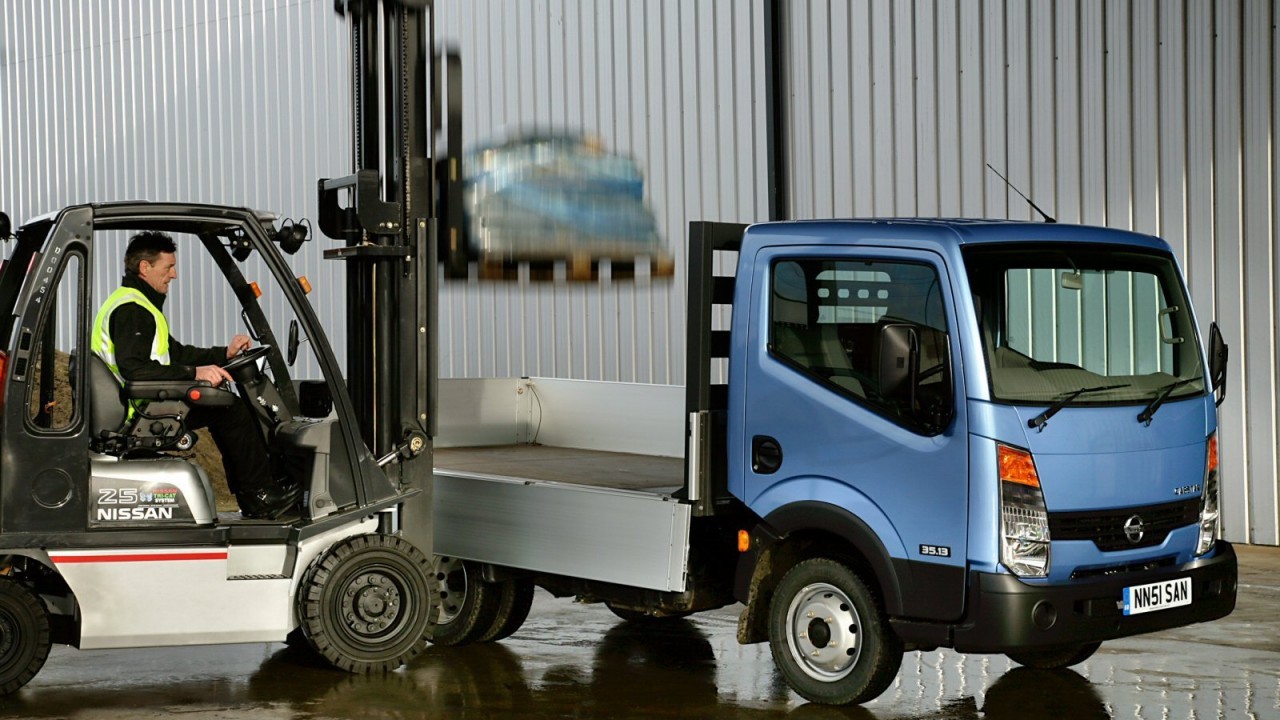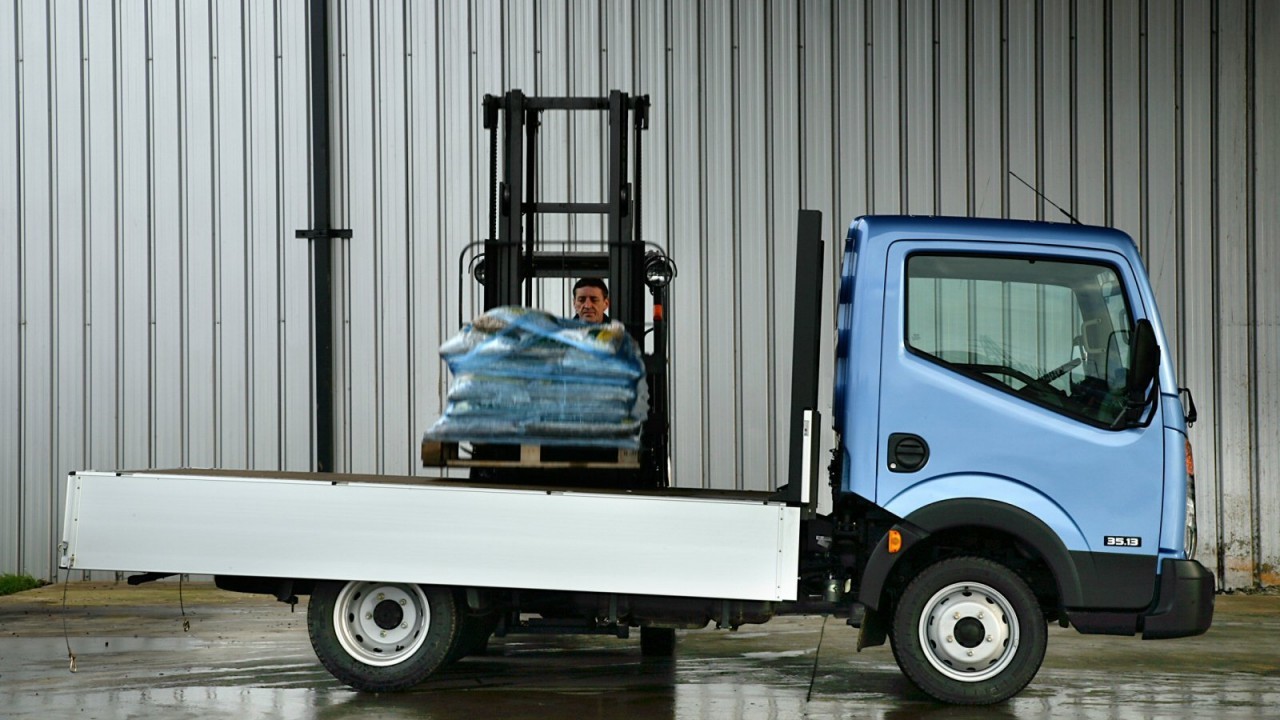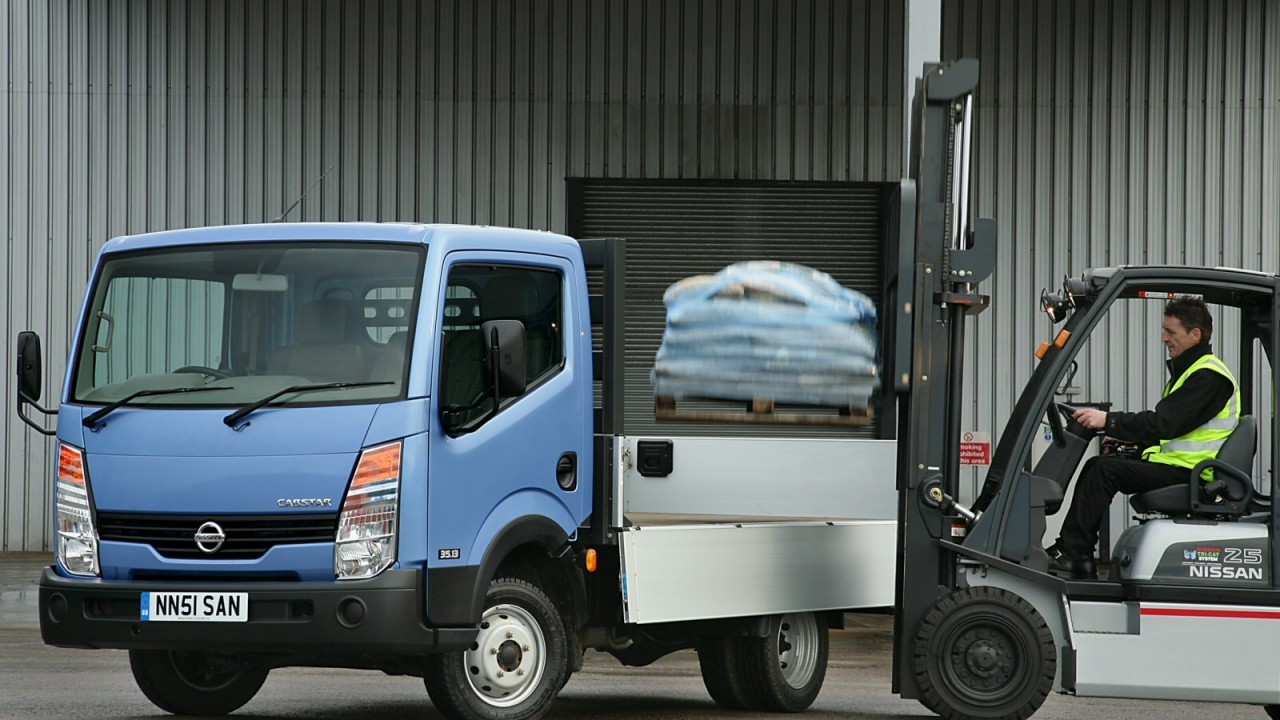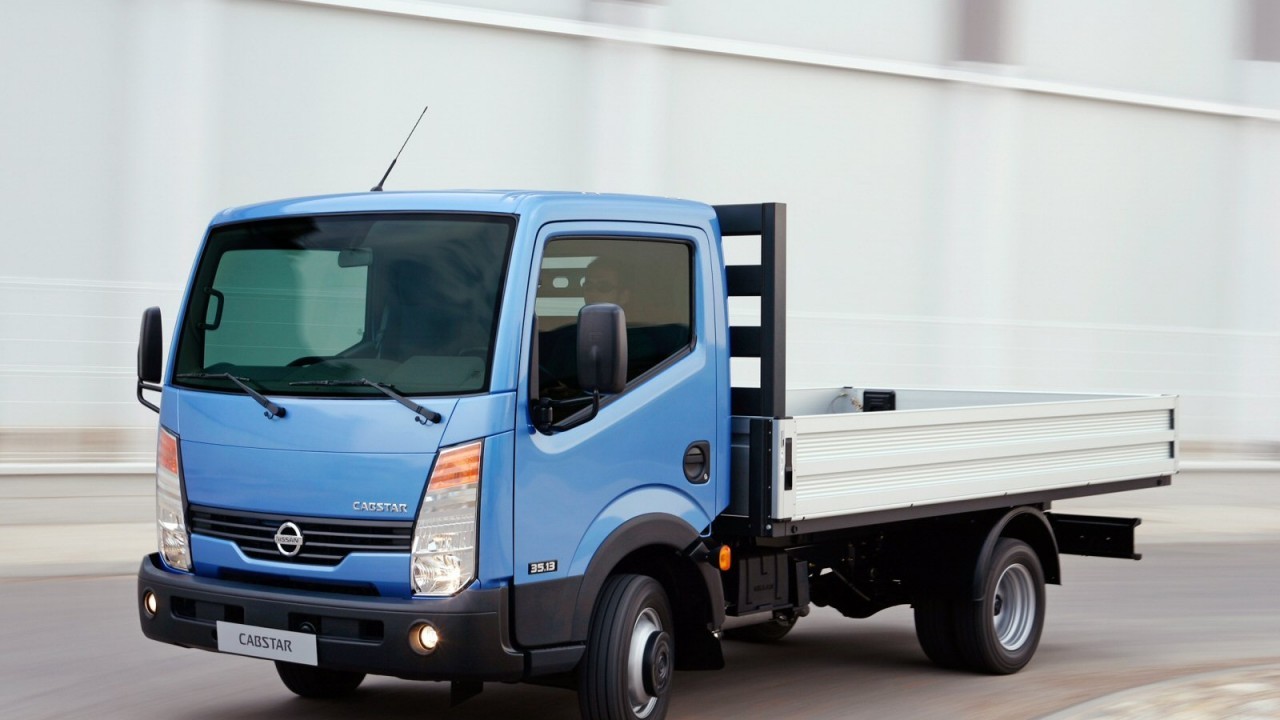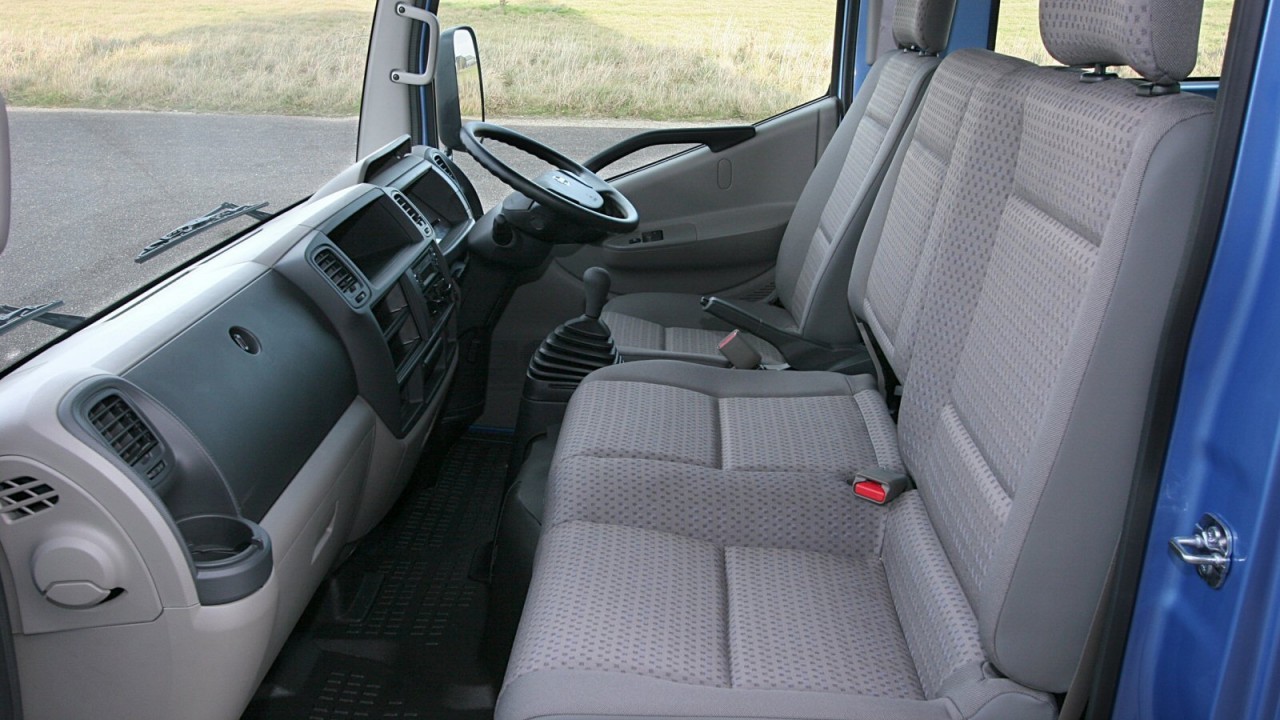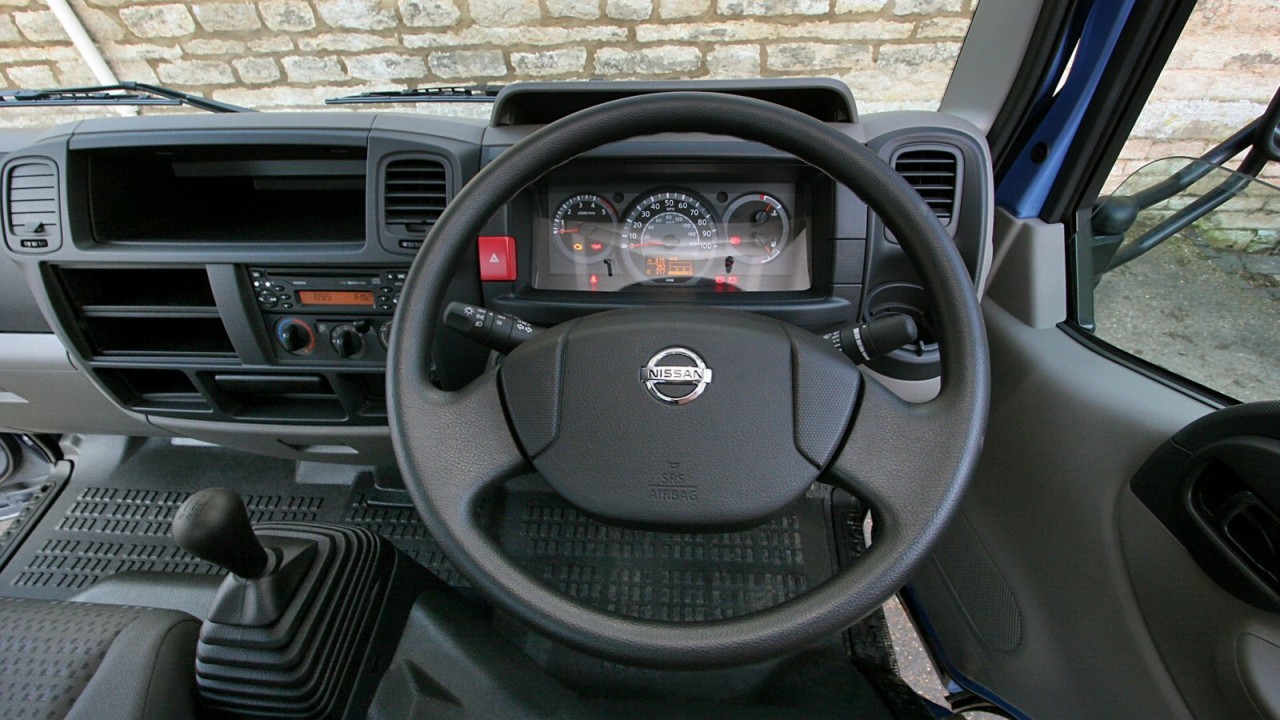Nissan’s Cabstar is short on finesse but long on practicality.
Power in the Cabstar comes from one of two common-rail diesel engines, both Euro 4 compatible.
The 2.5-litre unit comes in 110 and 130bhp form while the 3.0-litre option generates 150bhp and in all cases, power is directed to the rear wheels.
The power outputs might look meagre on paper for a vehicle that can carry as much as 1,500kg but the Cabstar isn’t built for speed and its engines are tuned for torque.
The first time you clamber up into a Cabstar, you find yourself with a lot to get used to. Many of the defining factors that make up the Cabstar’s driving experience stem from its design as a forward control vehicle.
A forward control vehicle is one with its steering rack positioned ahead of the front axle. This layout gives the Cabstar a super-tight turning circle of 9.6m and positions the driver right at the front of the vehicle with an unrestricted view through the vast windscreen.
This is great for easing the Cabstar in and out of tricky situations but it also means that you’re sitting on top of the axle and every imperfection in the road surface can seem like it’s being transmitted through the heavy-duty suspension and straight up your spine.
The Cabstar is distinctive to look at with its flat front and those oddly tall light clusters. The dropside model we tested was very strongly built with robust catch mechanisms that allow any combination of side panels to be lowered for easier access when loading. The side indicators that stick out from the body on stalks were the only things around the exterior that seemed in any way vulnerable.
There’s a wide range of models to choose from with short (2.5m), medium (2.9m) and long (3.4m) wheelbase versions available in chassis cab, dropside truck and tipper form. In addition to the standard single cab body style, a six-seater double cab layout can be specified with the medium and long wheelbases.
The trim levels are easy to grasp with the Basic kicking things off followed by Basic+, Pro and Pro+. Standard equipment includes a driver’s airbag, pretensioner seatbelts, a CD stereo and powered windows.
Payload capacities range from 1,269kg in the short wheelbase tipper to 1,579 in the short wheelbase dropside model. The key alternatives if you want a vehicle with a similar blend of lugging power and manoeuvrability are Toyota’s Dyna and Mitsubishi’s Canter which is sold through Mercedes dealerships. Otherwise, buyers can look to open-backed versions of the leading panel vans which will be smoother and more refined on longer trips but won’t be as nimble around town or as generally tough as a Cabstar.
The cabin is designed to be a sturdy working environment and it fills this role well.
There are plenty of cubby holes for storage but they’re all on the small side. You could fit reams of paperwork in the cabin but other than the area behind the middle seat, you’d be hard pushed to stow something the size of a thermos flask out of harm’s way.
The plastics used are generally hard and tough but some of the extraneous trim seems a shade flimsy – on pulling out the ashtray the best part of the dashboard threatened to come with it. Space is generous and you could fit three across the Cabstar’s cab without too much trouble. There’s also loads of headroom and the large glass area gives an airy feel to the interior.
On the downside, this gives the heater a tough job to clear the windows when they get steamed or iced-up.
The Nissan Cabstar is pitched at a very specific market. Many operators who use this kind of vehicle would never consider anything else, so well suited is it to its role, but others just won’t get it at all.
The big benefits are the manoeuvrability that stems from its 9.6m turning circle, its tough mechanicals and its big payload capacities. The penalties you pay for the Cabstar’s undoubted prowess as an urban delivery vehicle are its rough ride and lack of creature comforts.
Businesses looking for a commercial vehicle that’s a bit of an all-rounder should avoid the Nissan Cabstar but if your company needs to move big, dirty loads around towns and cities, there’s nothing better. The Cabstar takes the view that excelling in one area has got to be better than being mediocre in a host of others. In this instance, it might well be right.
